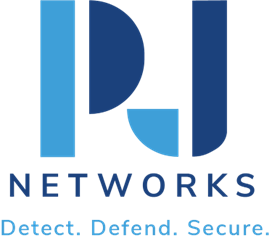Maximizing ROI on SIEM Investments: Tips and Strategies
Getting the best SIEM ROI is crucial for any organization that is serious about its cybersecurity posture. By understanding how your investment strategies can lead to better efficiency and security, you ensure you’re consistently getting value for the money spent. That’s what we are here to talk about today—how you, too, can get the best bang for your SIEM buck.
Understanding SIEM ROI
First, let’s talk about Return on Investment, or ROI, in the context of Security Information and Event Management (SIEM). Simply put, SIEM ROI measures the value you gain from your SIEM tools against what you’ve spent acquiring, implementing, and running them.
You know the basics: SIEM systems collect and analyze data to detect threats and respond swiftly. But, how do we ensure our SIEM is truly a worthwhile investment?
Understanding SIEM ROI involves:
- Calculating the cost of your SIEM systems
- Identifying the value SIEM brings to your organization’s security
- Regularly assessing whether these systems align with your business goals
Cost-Benefit Analysis
Next, let’s dive into a cost-benefit analysis to ensure your SIEM system is a smart choice financially.
Start by examining the direct and indirect costs:
- Direct costs: Initial software and hardware purchase, implementation, and ongoing management.
- Indirect costs: Training personnel, potential downtimes, upgrades, and the cost associated with transitioning from old to new systems.
On the benefits side, ask:
- Is the SIEM system reducing incident response times?
- Are you noticing any quantifiable decreases in breaches or security incidents?
- Is it making compliance more streamlined and efficient?
Once we lay out all the figures, a clear picture emerges. Does the reduced risk and improved efficiency justify the cost?
Strategies for Maximizing ROI
So, how can you make sure you’re getting the best SIEM value? Well, here are some strategies for maximizing ROI on your SIEM:
- Optimize System Configuration: Tailor your SIEM settings to focus on the most critical events, reducing noise and improving alert accuracy.
- Streamline Processes: Automate repetitive tasks to free up valuable employee hours and direct them towards high-priority issues.
- Invest in Training: Employee skills directly impact how well your SIEM is utilized. Regular training ensures your team remains proficient.
- Integrate with Other Tools: Combining your SIEM with other cybersecurity tools enhances its ability to detect and respond to threats.
- Regular Audits: Conduct security audits to ensure your SIEM system is effectively aligned with organizational workflows.
Measuring Success
Tracking progress is essential. Here’s how you can actively measure success:
- Benchmarking: Compare your organization’s performance today against where it was before SIEM implementation.
- KPIs: Set Key Performance Indicators for threat detection, response time, and incident reduction.
- Regular Reviews: Continuously review SIEM reports for insight into your organization’s cybersecurity posture.
- Feedback Loops: Encourage feedback from all users to find inefficiencies and implement improvements.
Conclusion
In conclusion, to truly maximize your organization’s SIEM ROI, and see a positive return on your investment strategies, a well-thought-out approach is key. From careful cost-benefit analysis to optimizing operations, each step ensures the value you gain vastly outweighs the cost, enhancing your cybersecurity efforts effectively. Through these strategies, measuring success will become tangible, allowing your business to move forward with confidence.
Remember, understanding the true potential of your SIEM tools means continuous improvement and agile adjustment. Let’s take these steps together to ensure your organization achieves the best possible outcome from its SIEM investments.
